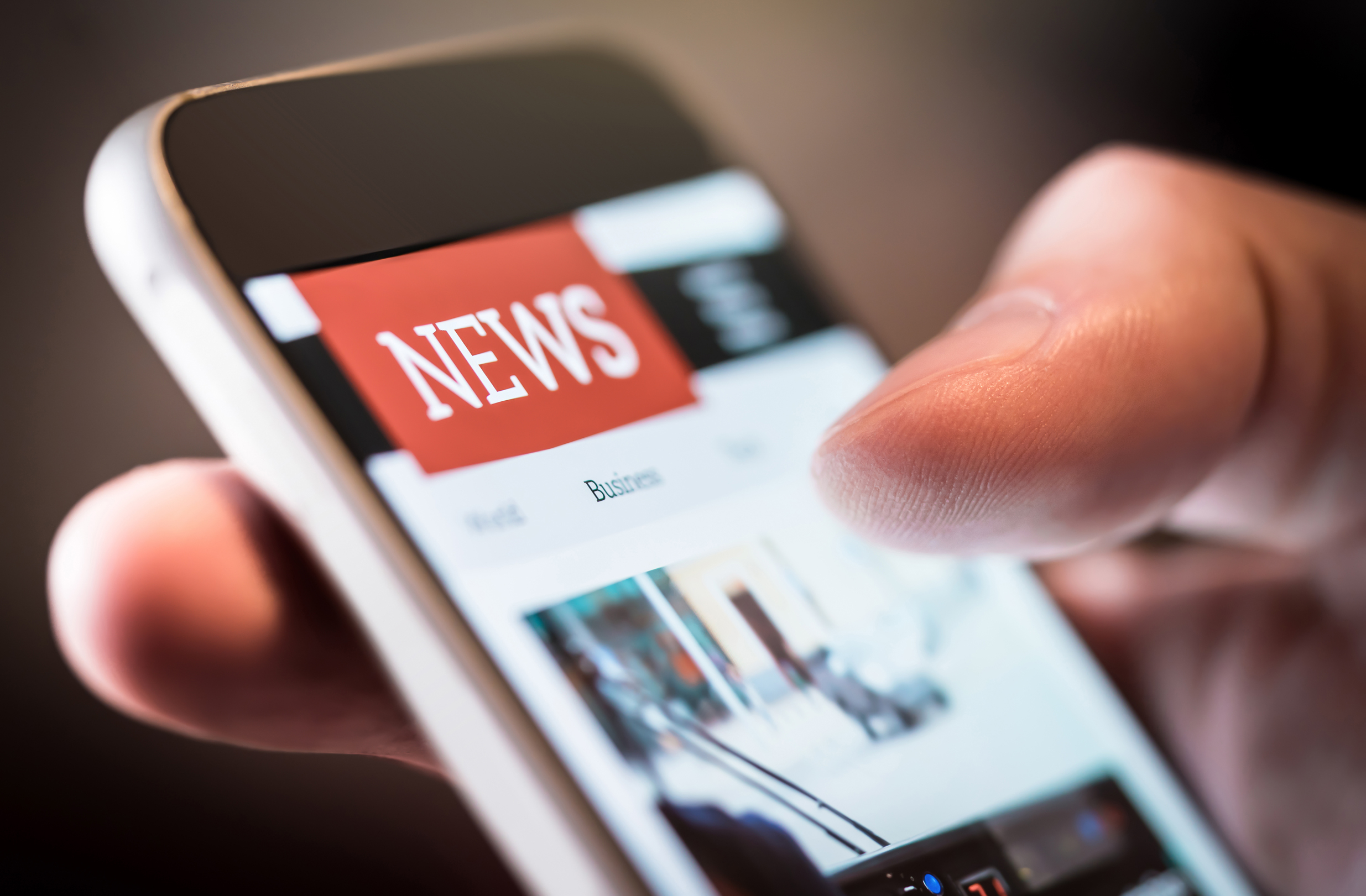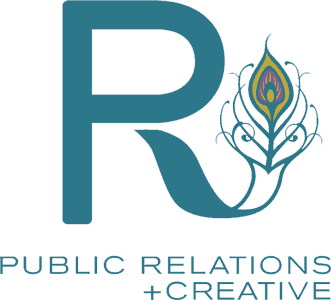R Public Relations Firm
7 Ways Public Relations Can Improve Customer Experience

While there are many aspects of the customer experience, there’s one thread that links them all: communication. It’s the key to your customer relationships. And there’s no better way to build and nurture those relationships than through the strategic communications power of public relations (PR). It just so happens that PR is our specialty and we can show you just some of the ways it can help improve customer experience.
- Creating Your Narrative – Your customers need to be aware of your brand’s positioning as well as the benefit and value of your product/service in a way that resonates with them. PR can help you relay those messages effectively and consistently across multiple channels.
- Understanding Your Customers and Your Market – A big part of PR is knowing who your customers are, where they are and what drives them. Armed with that information, you can develop PR strategies that make sure your brand is in the right place at the right time with the right message.
- Using Customer Feedback to Your Advantage – A customer satisfaction survey is no longer the only way in which you’ll gain feedback from customers. It’s still important, for sure, but now you’ll receive customer questions, praises and complaints (hopefully not) through a number of channels including social media. PR is crucial here, in not only controlling the narrative – promoting the positive, anticipating needs and addressing concerns – but also in presenting an open, transparent and timely image of your brand.
- Showing Your Customers The Way – Through the customer experience that is. Your buyer’s journey likely has multiple steps and PR can help you direct your customers through those steps with communications tailored to provide the information they need when they need it.
- Keeping Customers Engaged – Once your customer buys, that shouldn’t be the end of the story. PR can also help you keep them engaged by making sure they are in the loop on new offerings, updates to your products/services and your brand as well as by providing content that’s relevant to them.
- Navigating a Crisis – Whether it’s a problem with your product/service, an issue in the industry, or an unforeseen event like COVID-19, crises can and will happen. In these circumstances, PR can literally be your lifeline with customers. The right PR communications strategy can help you effectively share information, address the impact to your customers, and let them know how you’re remedying the issue(s).
- Building Relationships Beyond the Customer – Direct communications with your customers is important, no doubt. But there’s a credibility that comes with your brand being presented in a positive light through outside sources as well. That’s why relationships with the media as well as influencers are so important. Cultivating as well as maintaining those relationships is a key component of PR.
R team has expertise in the restaurant, hospitality, retail, health and wellness, business, non-profit industries and works with lifestyle brands in Nashville, Austin, San Antonio, New York, or anywhere in between. We’d love to help improve your customer experience with PR. Learn more about our public relations services. Or, click HERE to schedule your FREE discovery call today!

R Frequently Asked Questions on PR Buzzwords

PR is all about generating ‘buzz,’ and perhaps that’s why there are so many buzzwords in the public relations space. But with that comes just as many questions and we always want R clients (and potential clients) to be in the know. So, we’re clearing up any confusion on what PR is, how it works and how it can benefit your brand with these FAQs.
What is public relations (PR)?
In general, public relations (PR) is the process of maintaining a favorable image and building beneficial relationships between an organization and the public communities, groups and people it serves. As such, PR is often referred to as ‘free advertising’ because it primarily includes earned media such as:
- Mentions in the news as well as reviews
- Positive comments from customers on social media
- High organic rankings on search engines
How is PR different from marketing?
The short answer. The primary difference between the two is that marketing is focused on promoting a specific product, service or idea; and increasing sales, while public relations is focused on maintaining a positive reputation for the company overall. Check out our recent blog to learn more.
What do PR people do?
People who work in PR have many different titles, but the goal is one and the same; to create and maintain a positive public image for their employer or client. They use techniques and strategies related to managing how information about an individual or company is disseminated to the public, and especially the media. For example, R PR services include:
- Campaign development and management
- Media relationships
- Influencer relationships and marketing
- Media training for staff
- Content creation
- Pitching
- Traditional and digital media placements
- Editorial advance placements
- Community partnerships
What are the benefits of PR?
There are a multitude of benefits for brands that implement effective PR strategies. We could go on for days, and that’s why we always start with a discovery call. Because once we get to know you and learn your goals, we’ll create a proposal with a customized service outline that details the specific benefits of PR for your brand. But, in general, the benefits of PR include:
- Increasing brand credibility
- Increasing brand awareness and positive brand image
- Increasing profits, sales and leads
- Enhancing online presence
What is lifestyle PR?
Practitioners who work in lifestyle PR, like R firm, specialize in brands within industries that include restaurant, hospitality and retail as well as health and wellness. All of the same PR goals, strategies and techniques still apply, but this segment of PR tends to focus on the things people aspire to have, to achieve or to maintain a certain lifestyle and the brands that can help them achieve that. Success in lifestyle PR requires a more inherently relatable and personal approach, which is why we love it so much!
What is the price of PR?
Large PR agencies may charge upwards of $500 an hour for their time, however, smaller agencies or consultants may charge as little as $75 an hour. The average hourly rate at a larger PR agency is currently between $150-$250 per hour. R founder, Emily Reynolds Bergh, explains the value boutique PR firms can offer, “As a small business, we are mindful that not everyone can spend big when it comes to PR. So, we also have lower budget options in which clients can apply. One is based on promoting a specific project. The other is designed to support a solo entrepreneur for 6 months by developing their reach and brand identity, as well as a PR plan and campaign to launch them into the market in which they seek to connect. The end game is long-term relationships, not just a mass press release. And that provides ongoing value for your brand (and us).” Learn more about PR pricing in our recent blog.
What is a PR retainer?
In addition to hourly billing, you may also have the option of a PR retainer for the services you need. A PR retainer is a lump sum that you pay to the public relations agency or professional each month for their work. The amount paid depends on how much work you need to meet your PR goals and your budget, so it’s important to be specific about both in your preliminary communications. Your monthly statement should itemize any work performed as well as any expenses that were not included in the retainer. You should also be able to request the right to approve any expenses over a certain amount before they are incurred.
What is Newsjacking?
When hiring a publicist, one technique in which you want to make sure they are skilled and experienced is newsjacking. Newsjacking is the practice of aligning a brand with a current event in an attempt to generate media attention and boost the brand's exposure. Brands create related blog content and social posts to instantly reach a wider audience. Essentially, if you see an article written about a competitor or someone with a similar brand, you can have your publicist reach out to that media contact and ideally get your brand included in a similar story or an update to the one you may have seen! How cool is that?
For R help with your PR, learn more about our public relations services. Or, click HERE to schedule your FREE discovery call today!

What's the Difference Between PR and Marketing?
 You’d be surprised how often we are asked about the difference between PR and Marketing. So often, in fact, that we’re dedicating this entire blog to it! Many people believe that public relations (PR) and marketing are one and the same. But while they are both essential components of your brand’s communications strategy, that’s where most of the similarities end. Here’s how PR and marketing truly differ and how impactful each can be for your brand.
You’d be surprised how often we are asked about the difference between PR and Marketing. So often, in fact, that we’re dedicating this entire blog to it! Many people believe that public relations (PR) and marketing are one and the same. But while they are both essential components of your brand’s communications strategy, that’s where most of the similarities end. Here’s how PR and marketing truly differ and how impactful each can be for your brand.
The Particulars of PR
The Public Relations Society of America (PRSA) defines PR as, “a strategic communication process that builds mutually beneficial relationships between organizations and their publics.” The goal of PR is to influence, engage and build a positive relationship and/or image with your audience. Some of the tactics commonly used include:
- Corporate communications
- Crisis communications
- Investor relations
- Media relations
- Influencer relations
- Reputation management
- Event promotions
PR tools typically include:
- Press collateral
- Editorial placements
- Social media placements
- Media and influencer outreach and list development
- Sponsorship and partnership coordination
More on Marketing
The American Marketing Association (AMA) defines marketing as, “the activity, set of institutions, and processes for creating, communicating, delivering, and exchanging offerings that have value for customers, clients, partners, and society at large.” The goal of marketing is to build awareness of and to promote/sell your product(s) and/or service(s). Some of the tactics commonly used in marketing include:
- Brand marketing
- Advertising
- Content
- Search engine marketing
- Social media marketing
- Targeted marketing campaigns
- Conference and trade shows
Marketing tools typically include:
- Sales collateral
- Blogs
- Website
- Direct mail
How PR and Marketing Differ
PR and marketing are most effective when used together as part of an overall communications strategy because they serve different but equally important goals. That said, two of the primary differences in PR and marketing are:
- The relationship required with media and influencers
- Control over the narrative
Traditional PR is typically not paid (see our previous blog on Earned Media versus Paid Media) which makes relationships with the media as well as influencers so important. Most brands neither have the time nor the expertise to cultivate and maintain these relationships, which is where R firm comes in. We have incredible direct media contacts and use that bridge to ensure your message(s) is covered in the right places at the right time.
In marketing, you pay to play so to speak so those relationships aren’t necessary AND you have full control over the narrative. Take advertising for example; the publication will place your message (ad) in the size you select, on the date(s) you select and repeat it in the frequency you select based on your budget.
You don’t have as much control over the narrative in PR. Even if you get the coverage, you’re not guaranteed the message will be exactly as you would like it to appear. Again, that’s where R expert team comes in, we know the ins and outs not only in getting covered but in getting your message conveyed in the most positive and appealing light.
For R help with your PR, learn more about our public relations services. Or, click HERE to schedule a FREE discovery call today!
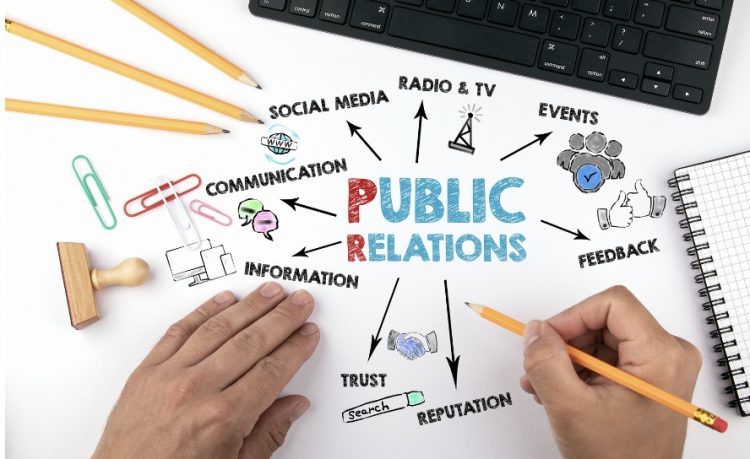
Where PR and SEO Intersect
 While they may seem like two completely different aspects of the marketing spectrum, you can think of PR as the yin to SEO’s yang. It’s true! PR can help with your SEO and vice versa, but even better is the fact that while few brands fully understand the impact, even fewer know how to maximize it. Luckily with R tips, you’ll be one of them – giving your brand the advantage!
While they may seem like two completely different aspects of the marketing spectrum, you can think of PR as the yin to SEO’s yang. It’s true! PR can help with your SEO and vice versa, but even better is the fact that while few brands fully understand the impact, even fewer know how to maximize it. Luckily with R tips, you’ll be one of them – giving your brand the advantage!
Why PR and SEO Work So Well Together
First and foremost, it’s because PR and SEO have similar goals, including brand awareness and controlling the narrative around a brand, product, or service. But while the tactics may be different - think keywords in SEO versus press releases in PR– they benefit each other.
For example, high-quality backlinks from credible media sources (or influencers) that write about your brand can give your website higher domain authority in the eyes of the ever-powerful Google. That means your website moves up higher in search results, driving more organic traffic and, ideally, more conversions.
Brand mentions as a result of your PR efforts can also help you rank higher for certain keywords in Google as well, particularly local brand mentions.
Yet another way PR and SEO can work together is to break down silos in your marketing. Often, the PR side and digital/SEO side of your team work separately, which often means their efforts aren’t entirely consistent with each other. The trouble is, maintaining a consistent brand message in this connected world of ours is absolutely crucial. By working together, you’ll have even greater and more impactful reach.
How PR and SEO Can Work Better Together
Now that you understand why PR and SEO work so well together, it’s time to learn how to maximize that impact. R tips include:
- Be smart about backlinks - Most of the time, press releases or other types of PR will include a link to the homepage of your website. While those types of backlinks are good; often backlinks to internal pages are even better because they are more focused and it’s within those pages that you dive into more of your expertise.
- Consider your content – This is for both PR and SEO. Content needs to be relevant and targeted. In doing so, you’re not only more likely to score those brand mentions, backlinks, and media impressions in general, you’ll also be seen as a more credible and trusted source by Google as well as your target audience.
- Build relationships – This has always been a crucial aspect of PR, but it should be for SEO too. With PR, you’re building relationships in the media and with influencers. For SEO, it could benefit your brand, product, or service to connect with bloggers or websites that are important in your industry by asking for links and/or mentions.
- Track and Improve - Historically, it’s been hard to track mentions – remember the days of press clippings? – ugh! But, with PR and SEO working together, you’re better able to track whether those backlinks and mentions are leading to more traffic and conversions. Then, using that data, you can continue to refine your approach.
For R experienced help with your PR and SEO, click HERE to schedule a FREE Discovery Call today!
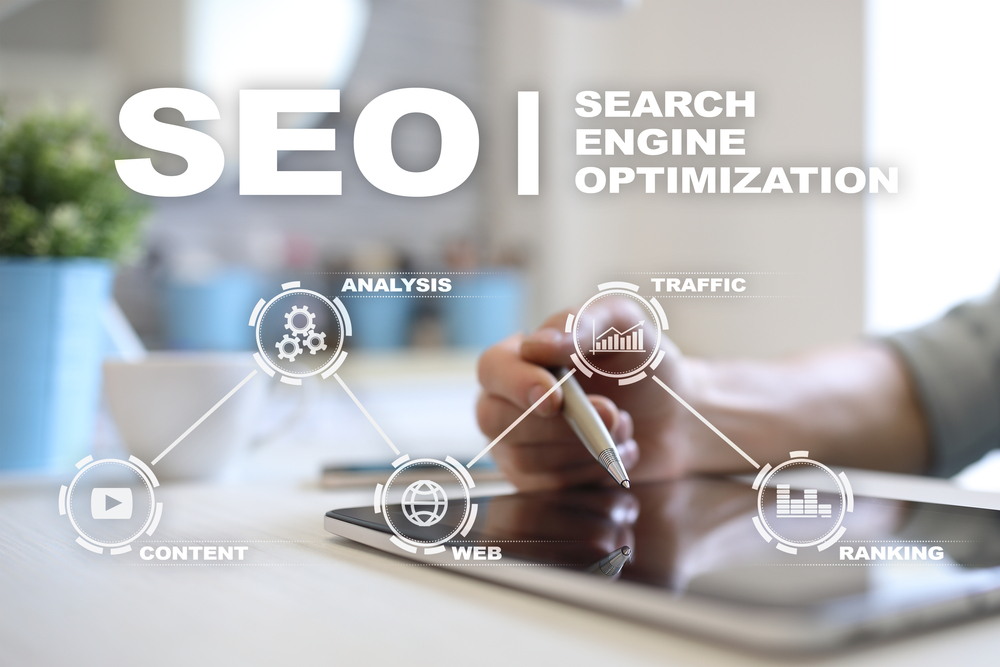
R Public Relations Firm has been recognized among the 10 best Public Relations Firms in Austin, New York and San Antonio in 2021 by DesignRush Marketplace.

After evaluating and analyzing RPR’s performance with some of the most prominent brands in the US, the online platform gave the company a spot among the most reputable agencies in San Antonio.
R Public Relations (RPR) was founded in 2008 by Emily Reynolds Bergh, an experienced and seasoned publicist who has worked with top name media companies and secured press in The New York Times, Food and Wine Magazine, LA Times, Esquire Magazine, Texas Monthly, Garden and Gun, Southern Living, and more! RPR has achieved a 90% client retention rate, thanks to the relentless pursuit of opportunity and optimization efforts, and prides itself on being a part of every client's internal team.
In 2020, despite a global recession caused by the Covid-19 pandemic, the company had no layoffs or pay cuts, adopting an “employee first'' policy, and was able to surpass a growth rate of over 200% from the previous year. RPR’s presence has grown from the US into Europe and continues to expand.
DesignRush is a reliable online guide to finding the best professional companies and agencies, categorized according to vertical and area of expertise.
DesignRush evaluates thousands of agencies and is committed to helping brands find the best solutions for their needs. The platform has a listing that allows users to search partners based on clients, portfolios, reviews, pricing structure, and testimonials. This recognition to R Public Relations is one of many that distinguishes the agency and claims its excellence.
DesignRush has also ranked R Public Relations as a Top PR Company in New York and Nashville.

Earned Media vs Paid Media (and Why You Need Both!)
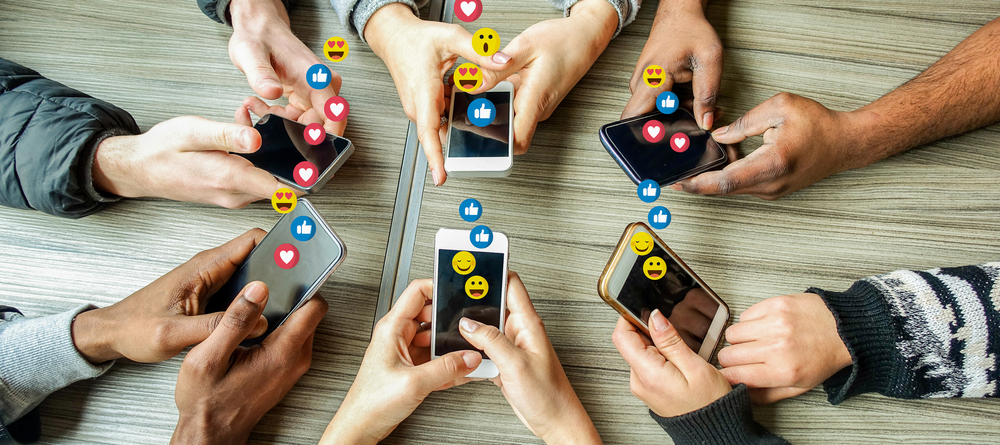
When it comes to cultivating a positive reputation for your brand, promoting your products, services or events and keeping your name top-of-mind in the media, success hinges on the right mix of public relations. That’s right, public relations or PR, isn’t as cut and dry as you may think. There are actually different types of PR – specifically, earned media and paid media – and each uses different strategies to help you achieve your goal. When should you use earned media vs paid media? R approach is to use both. Here’s how the mix benefits your brand.
Earned Media vs Paid Media
First, let’s define each. Earned media is likely what you typically think of when it comes to PR and it includes:
- Mentions in the news as well as reviews
- Positive comments from customers on social media
- High organic rankings on search engines
This word-of-mouth PR is the best type, but it’s also the hardest to achieve. As the name says, you have to earn it through hard work on your end by creating exceptional customer experiences and on R end through expertise in social media strategy as well as content development plus the relationships we nurture and develop with media contacts.
Paid media is exactly as it sounds; paying to make your brand more visible through:
- Social media advertising
- Influencer marketing
- Pay-per-click (PPC) advertising
This is becoming increasingly popular as a way to supplement earned media because you have more control and can target the specific audience(s) you want to get your brand in front of. But again, having the right expertise in these areas is crucial to keep you on point and on budget.
Achieving the Right Mix
Unfortunately, there’s no set formula that can tell you how much earned media vs paid media is necessary to achieve your goals. Both have their own pros and cons.
Earned Media Pros
- Increased credibility
- Heightened brand awareness
- Expanded reach
Earned Media Cons
- Considerable time and effort
- Can be difficult to measure
- Running the risk of negative publicity too
Paid Media Pros
- Control over your message and targeting
- Easy to measure
- Quick results
Paid Media Cons
- Can be costly
- Lacks the credibility of earned media
- Managing multiple platforms can be challenging
To achieve the right mix for your brand, you have to balance the pros and cons of each type of PR with your own resources, budget and goals.
R Team Can Help
R team has the PR expertise in both earned media and paid media, and experience in industries such as restaurant, hospitality, retail, health and wellness, business, non-profit to help you determine just the right mix for your brand. It all starts with a discovery call where we take the time to get to know you, your brand and your goals firsthand. From there we’ll create a proposal with a customized service outline with the earned media and paid media balance that gives you the greatest PR benefit.
Click HERE to schedule a FREE Discovery Call today!
